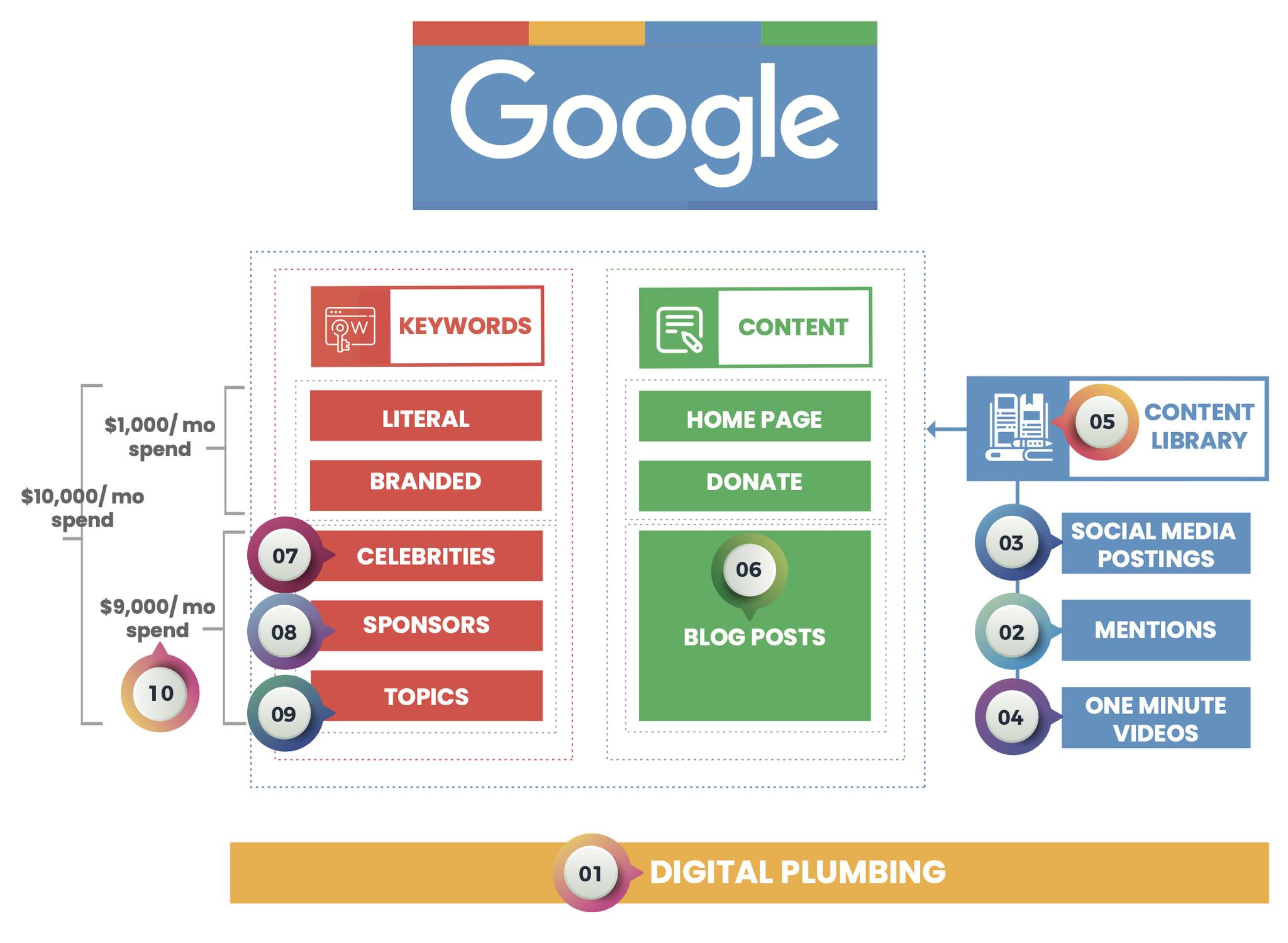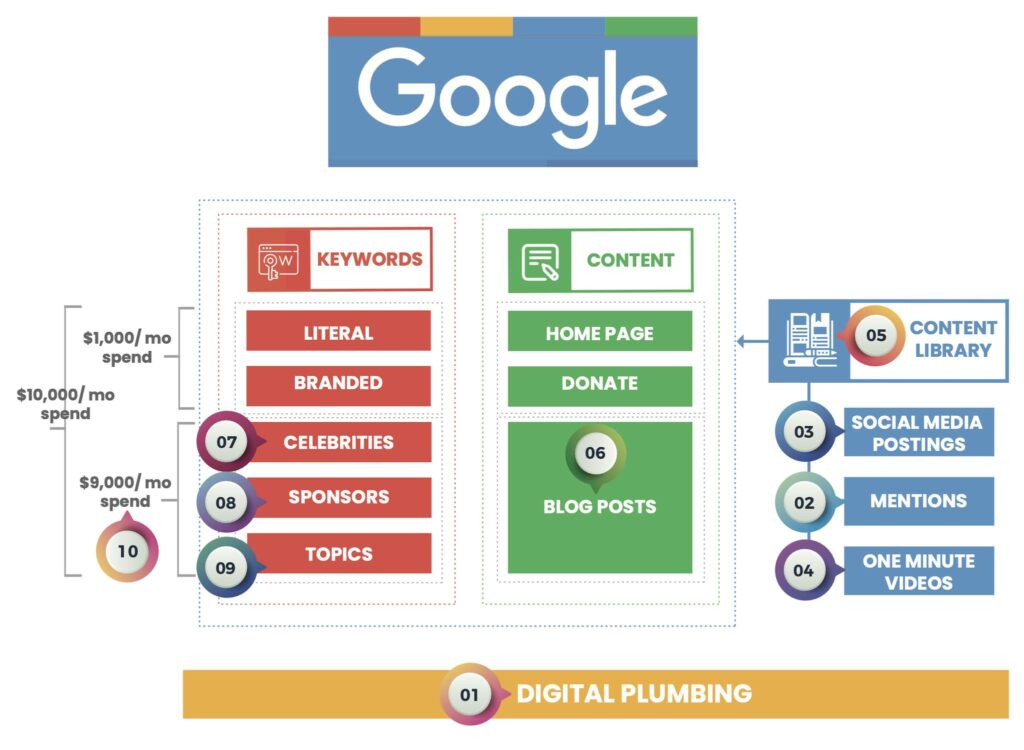

I want to shed some light on how nonprofits can make the most out of Google Grants. Google Grants is a fantastic resource for nonprofits, offering up to $10,000 in monthly advertising funds if you have a 501(c)(3) status. But many nonprofits struggle to optimize their grants effectively. We’ve been working closely with Google for 17 years, conducting webinars to help nonprofits overcome these challenges. Let me walk you through our process for maximizing Google Grants.
One of the common issues nonprofits face is that only a small percentage actually spend more than $1,000 of their $10,000 grant. This happens due to a lack of content, low-quality scores, and failure to achieve a minimum 5% Click-Through Rate (CTR). Despite Google increasing the maximum bid from $1 CPC to $2 CPC, many nonprofits still find it challenging to make the most of their grant.
Now, let’s break down the ten-step process:

Create one-minute videos
To tackle this, we suggest starting by creating one-minute videos featuring key figures within your nonprofit, such as the Executive Director or beneficiaries. Transform these videos into blog posts, highlighting notable supporters or sharing impactful success stories. For example, Mark Horvath and his homeless charity, invisiblepeople, do a fantastic job showcasing individuals and their stories, which can be turned into boosted posts.
Find the right keywords
Boosting these posts requires finding relevant keywords for your searches. Nonprofits often struggle because they focus on narrow terms. To maximize your grant, target broader terms like “pet housing for battered women” to reach a wider audience effectively.
Keep in mind that Google Grants only apply to search keywords; display or YouTube ads are not included. Even search partners are excluded, which means bidding on your charity’s name alone might only consume $20 of the $10,000.
To expand the number of keywords you can target, you need more content, not just more keywords. This means creating a wider range of content that allows nonprofits to bid on a broader set of keywords and maximize the grant. If you want to support causes you believe in, consider creating blog posts or one-minute videos expressing your admiration for these organizations. You can even use part of their Google Grants money to promote the blog post showcasing your collaboration with the nonprofit. This mutually beneficial strategy helps both you and the organization.
In conclusion:
- Allocate up to $1,000 of the $10,000 grant to promote your blog post.
- Keep in mind that Google changed the rules, limiting geographical targeting unless it’s a national nonprofit. However, if you’re a local business collaborating with a local nonprofit, you can still leverage geo-targeting.
- Select relevant keywords to ensure a 5% CTR. Utilize the celebrity angle or associate your cause with well-known individuals, buildings, or organizations to attract enough traffic and meet the CTR requirement.
- Make the most of this free money from Google to assist nonprofits while benefiting yourself. We’re here to provide support and assistance.
Google Grants present significant opportunities for nonprofits to enhance their online presence and reach a wider audience. By understanding the rules, addressing common challenges, and implementing effective strategies, you can fully leverage Google Grants for the benefit of your nonprofit organization.
Interested in making the most of your journey in making a positive impact through Google Grants? Enroll in our Dollar a Day program today!
